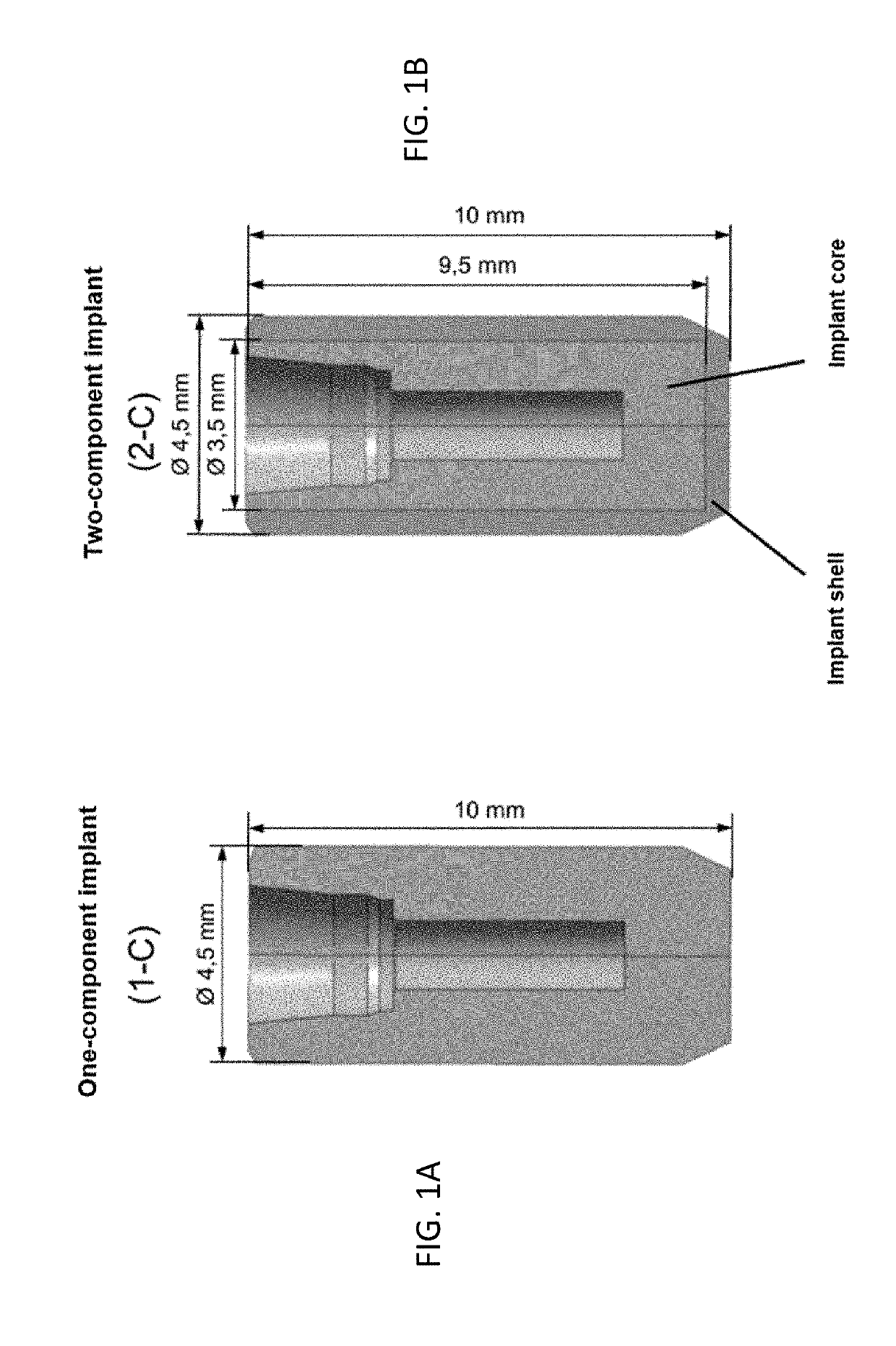Implant made of fibre-reinforced plastic
a technology of fibre reinforced plastics and implants, applied in the field of synthetic materials, can solve the problems of absorbing normal stresses, destroying bones, and affecting the quality of implants, and achieve the effects of high flexibility, easy automation, and efficient production methods
- Summary
- Abstract
- Description
- Claims
- Application Information
AI Technical Summary
Benefits of technology
Problems solved by technology
Method used
Image
Examples
Embodiment Construction
[0277]A finite element analysis was performed to examine the mechanical effects on the peri-implant bone when exposing a PEEK implant reinforced with randomly multidirectionally arranged continuous carbon fibers (fiber content approx. 55%) according to the invention to stress compared to a PEEK implant according to WO 2014 / 198421 A1.
Material and Methods:
[0278]Two simplified cylindrical implant models were created. The first implant model only consisted of one component (1-C) which was made of PEEK reinforced with 55% randomly multidirectionally arranged continuous carbon fibers (55-CFR-PEEK) and matched an implant according to the invention.
[0279]The second implant model consisted of two components (2-C): An implant core made of the same PEEK type as the 1-C implant model (55-CFR-PEEK) and an implant shell which had a layer thickness of 0.5 mm in the surface area of the implant and consisted of a TiO2-filled PEEK. FIG. 1 shows a longitudinal sectional view of the two implants examin...
PUM
| Property | Measurement | Unit |
|---|---|---|
| diameter | aaaaa | aaaaa |
| depth | aaaaa | aaaaa |
| particle size | aaaaa | aaaaa |
Abstract
Description
Claims
Application Information
 Login to View More
Login to View More - R&D
- Intellectual Property
- Life Sciences
- Materials
- Tech Scout
- Unparalleled Data Quality
- Higher Quality Content
- 60% Fewer Hallucinations
Browse by: Latest US Patents, China's latest patents, Technical Efficacy Thesaurus, Application Domain, Technology Topic, Popular Technical Reports.
© 2025 PatSnap. All rights reserved.Legal|Privacy policy|Modern Slavery Act Transparency Statement|Sitemap|About US| Contact US: help@patsnap.com



